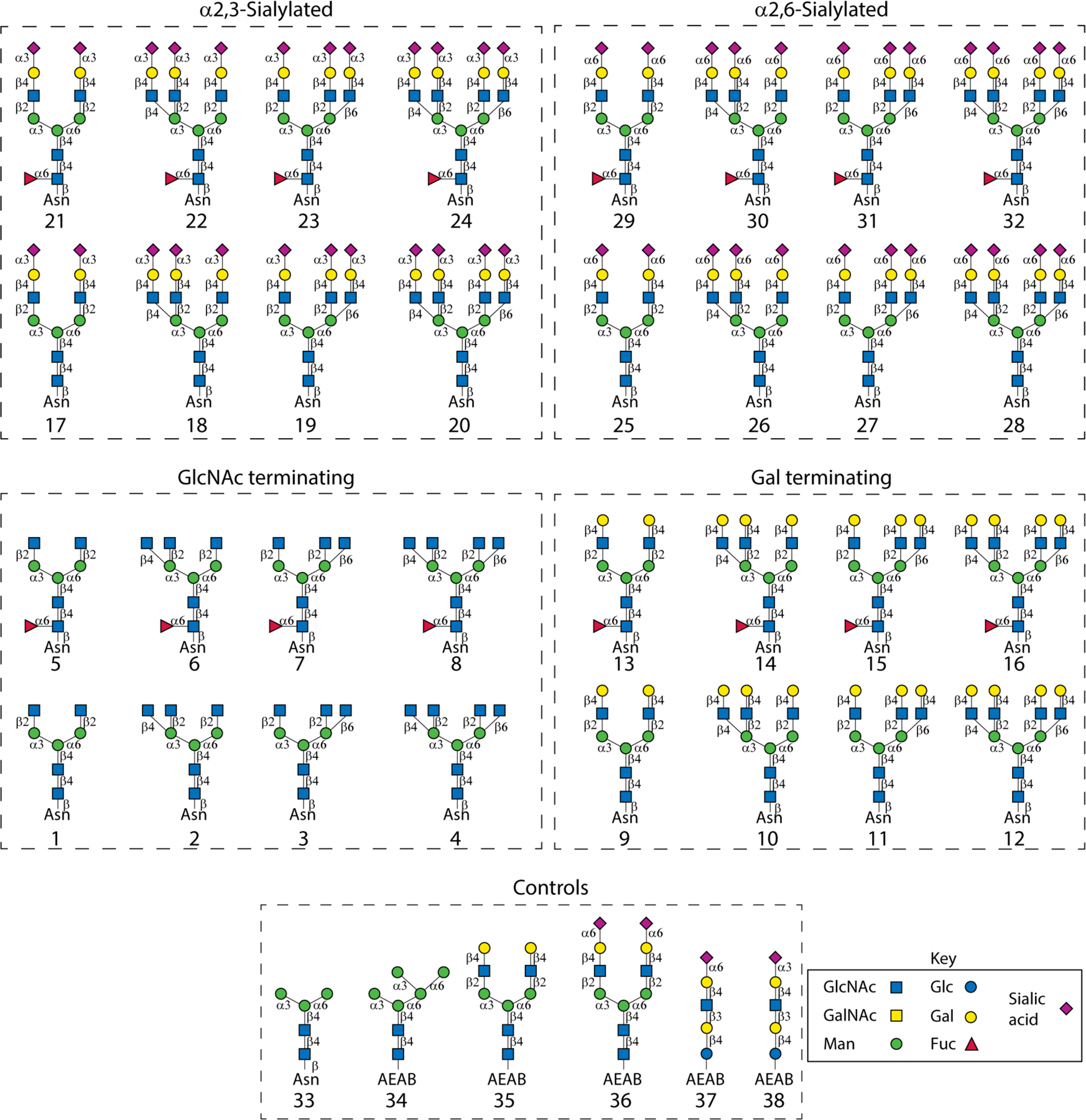Figure 1.

Composition of the 32 complex-type naturally occurring N-glycans and controls used in this study. Sixteen (1-16) of the N-glycans are precursors with no sialic acids. Half of them (1-8) are GlcNAc-terminating and the other half (9-16) are Gal-terminating structures. The other sixteen (17-32) are fully capped with either α2,3- (17-24) or α2,6-sialic acid (25-32). Both non-fucosylated and fucosylated species are present in each subgroup. Six glycans from the archival collections of our lab were printed as controls on the array including two mannose-terminating compounds Man3-Asn (33) and Man5-AEAB (34), two complex-type N-glycans NA2-AEAB (35) and A2-AEAB (36), and α2,6- and α2,3-sialic acid containing glycans LSTc-AEAB (37) and LSTd-AEAB (38). The symbolic nomenclature for glycans is shown.
